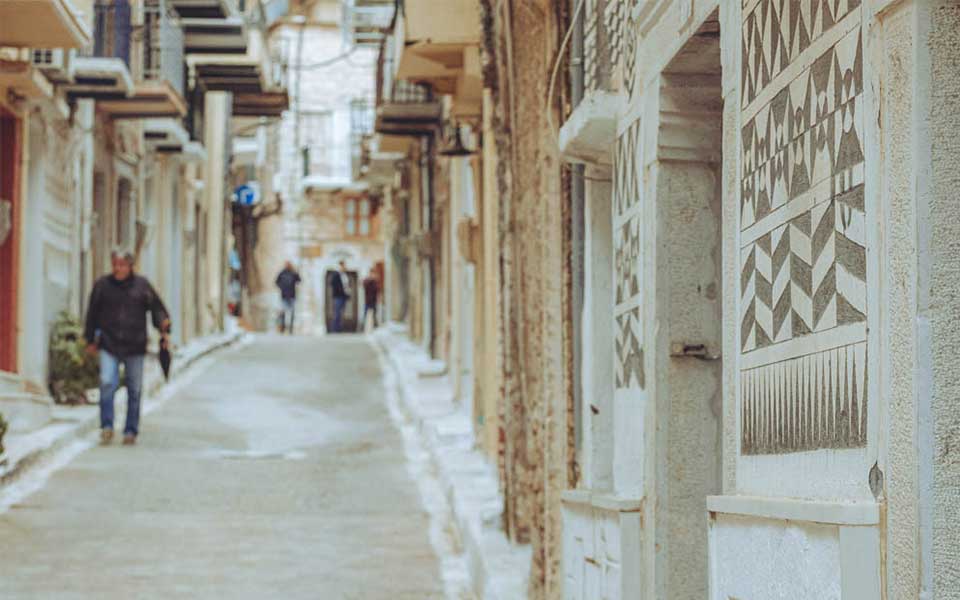The famous mastic tears of Chios and the puzzling motifs that decorate the houses of Pyrgi village are the focus of a brand new video by the popular BBC Reel series, titled “The Greek Island of Geometric Wonders.”
Known as the “painted village,” almost every façade in Pyrgi is covered in a dazzling array of black and white decorative motifs. Located some 25km south of the island’s capital, it is one of a group of so-called Mastic Villages, where residents are engaged in mastic (tree resin) agriculture.
In the video we meet Michail Pantelakis, a master craftsman who applies the designs using a technique called “xysta,” meaning “scratched.” The motifs are applied using plaster, lime, and a few simple tools, including a ruler, level, compass, fork, and needle.
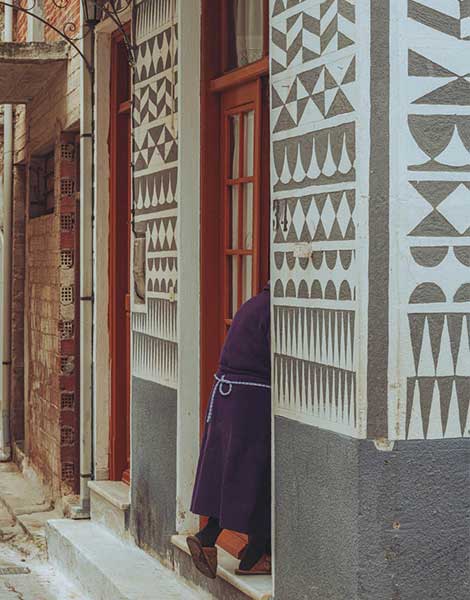
© Nikos Boutsikos, Nidibou Photography
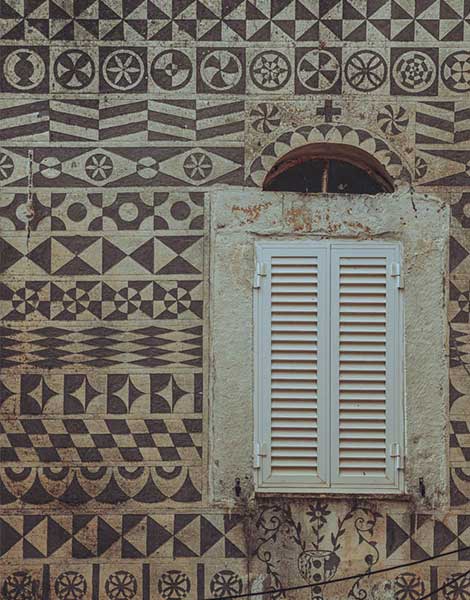
© Nikos Boutsikos, Nidibou Photography
“You can’t have one design in white followed by another in white. You have to find a pattern that fits to make the contrast,” says Pantelakis. The most common motifs include triangles, rhombuses, and semicircles.
Local architect and author, Maria Xyda, a specialist in the origins of the xysta craft, explains that it is unique to Pyrgi: “In many Byzantine icons, we can see how houses were decorated with carpets and cloths hung outside. Pyrgi’s xysta imitates a carpet, a kilim.”
“What is striking is that these geometric shapes start and end perfectly, and this means that the craftsman knows or at least has some geometry skills,” she adds.
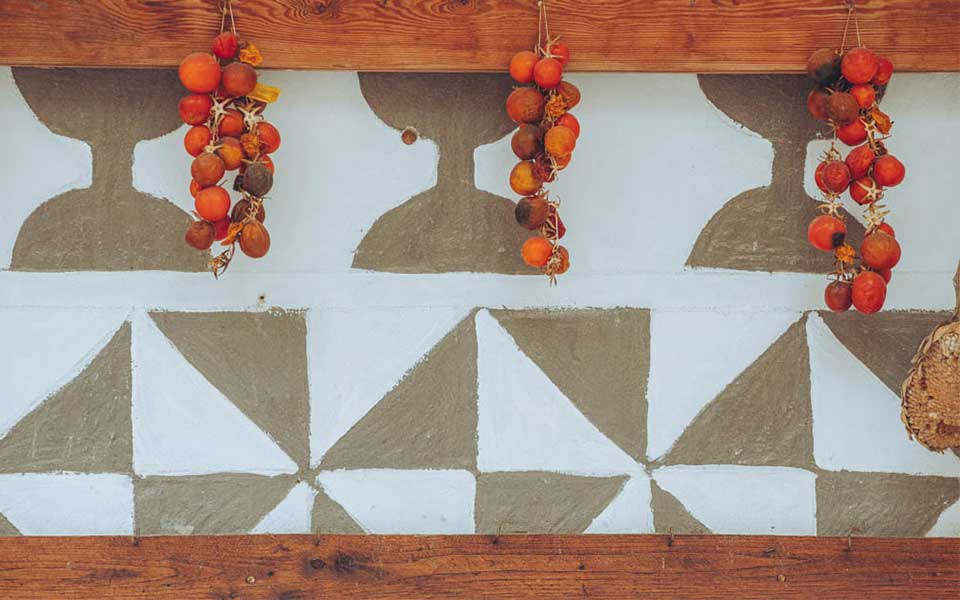
© Nikos Boutsikos, Nidibou Photography
Advanced Mathematics
Charoula Stathopoulou, professor of mathematics education, refers to this phenomenon as “ethnomathematics.” “What struck me was that these craftsmen did not have this strictly theoretical foundation of mathematics in mind,” she explains. Instead, this technique for creating intricate geometrical designs was learned by rote from the previous generation of craftsmen.
Chios’ rich and diverse history, including periods of Genoese and Ottoman rule, has left an indelible mark on the island’s architectural and cultural heritage. Maria Xyda notes that the first xysta craftsmen came to the island from Constantinople. The technique also exists in Italy and Switzerland, but there “they don’t have geometric designs,” she adds.
The only other place that uses the same designs is Cappadocia, in central Turkey, but they are applied using a different technique. Xyda goes on to say that “xysta is a combination of East and West. The West is Genoa and the East is Cappadocia,” but why the technique only thrived in the village of Pyrgi “remains a mystery.”
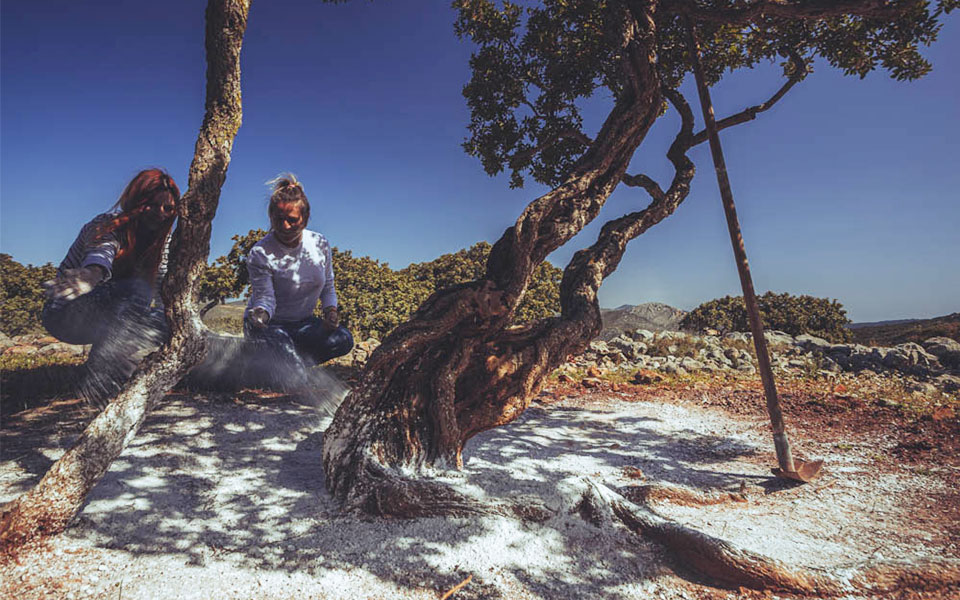
© Nikos Boutsikos, Nidibou Photography
Walled Villages
The answer to this mystery may lie in the island’s most famous agricultural product: mastiha, made from the resin of the mastic tree, unique to southern Chios. According to Dimitris Tsouchlis, advisor at the Chios Mastic Museum, there was high demand for mastic in antiquity, and the islanders enjoyed a “special administrative status” due to the trade, which, in turn, influenced “historic events and the architecture of the southern part of the island.” Tsouchlis notes that “the mastic villages of
Chios are the only examples in the Aegean of walled villages,” organized like fortified castles by the Genoese “to protect the people who cultivated it [mastiha].” As such, the villagers, inside their walled surrounds, decided to embellish them with elaborate geometric decorations. Over time, these designs became a conspicuous display of identity. “Pyrgi is identified with xysta and xytsa is identified with Pyrgi. One does not exist without the other,” concludes Xyda.

